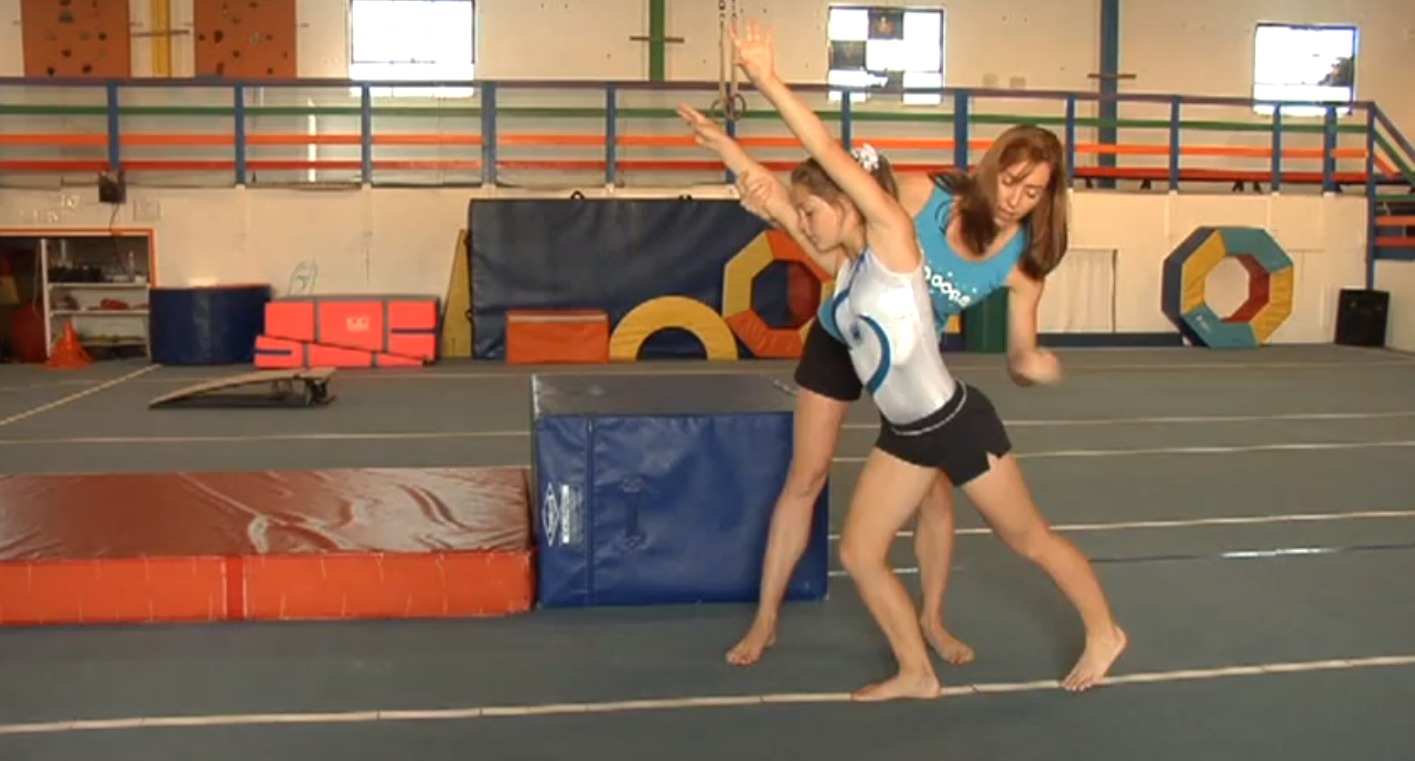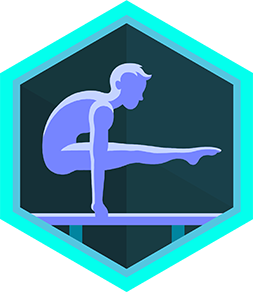Perform gymnastics
Learn and practice basic gymnastics skills like warm ups, balance, rolls, handstands, and simple routines safely on mats, improving strength and coordination.



Step-by-step guide to practice basic gymnastics skills
Kids gymnastics fundamentals (EVERYTHING you need to know)
Step 1
Remove toys shoes and furniture so you have a clear safe practice space
Step 2
Lay your mat flat in the cleared space
Step 3
Put on comfortable clothes that let you move freely
Step 4
Jog lightly in place for one minute to warm up your body
Step 5
Do 10 arm circles forward and 10 arm circles backward to warm your shoulders
Step 6
Do 10 leg swings on each leg to loosen your hips
Step 7
Walk heel-to-toe along the middle of the mat five times to practice balance
Step 8
Kneel and tuck your chin to your chest five times to practice the forward-roll tuck position
Step 9
From a low squat try a forward roll by placing your hands on the mat tucking your chin and rolling over your shoulders to stand up
Step 10
Practice a wall-assisted handstand by placing your hands on the mat kicking up gently until one foot touches the wall and holding for up to 10 seconds
Step 11
Put together a short routine of three moves you like such as a balance walk a forward roll and a wall-assisted handstand and practice the routine three times
Step 12
Sit down and gently stretch your hamstrings and shoulders for 30 seconds each to cool down
Step 13
Share your finished routine on DIY.org
Final steps
You're almost there! Complete all the steps, bring your creation to life, post it, and conquer the challenge!


Help!?
What can I use instead of a gymnastics mat if I can't find one?
Lay a thick folded blanket, rug, or yoga mat flat in the cleared practice space to protect knees and follow the instruction to 'lay your mat flat.'
My child gets stuck halfway through the forward roll and won't stand—what should I try?
Have an adult spot by supporting the hips, practice the tucked chin and hand placement while kneeling, and roll over a soft cushion so they can safely complete 'tucking your chin and rolling over your shoulders to stand up.'
How can I adapt the routine for younger or older children?
For ages 3–5 cut counts in half (fewer arm circles, leg swings, and walk repetitions) and replace the wall-assisted handstand with gentle wall walks, while older kids can hold handstands longer, add more repetitions, and build a more complex three-move routine.
How can we personalize or extend the activity after the basic routine?
Let the child create a themed three-move routine, add music, time or score each run, film the performance to share on DIY.org, and extend cool-down stretches to 45 seconds for extra benefit.
Watch videos on how to practice basic gymnastics skills
10 BEGINNER GYMNASTICS SKILLS YOU SHOULD MASTER
Facts about gymnastics for kids
⏱️ Short daily practice sessions (5–10 minutes) on handstands and balance drills build strength and balance faster than a single long practice each week.
🧘 A 10–15 minute dynamic warm-up raises muscle temperature and mobility, which helps reduce the chance of strains before practicing skills.
🏅 Simone Biles has the most World Championship gymnastics medals (25), showing how basic skills can lead to world-class routines.
🛡️ Using mats and a spotter dramatically lowers the risk of hard landings when learning rolls, handstands, and flips.
🤸♀️ Gymnastics builds core strength, balance, and flexibility — kids often notice better coordination within just a few weeks of regular practice.
How do I teach my child basic gymnastics skills at home?
What materials do I need for a beginner kids' gymnastics session?
What ages is beginner gymnastics suitable for and how should it be adjusted?
What safety tips should I follow when my child practices gymnastics at home?


One subscription, many ways to play and learn.
Only $6.99 after trial. No credit card required



